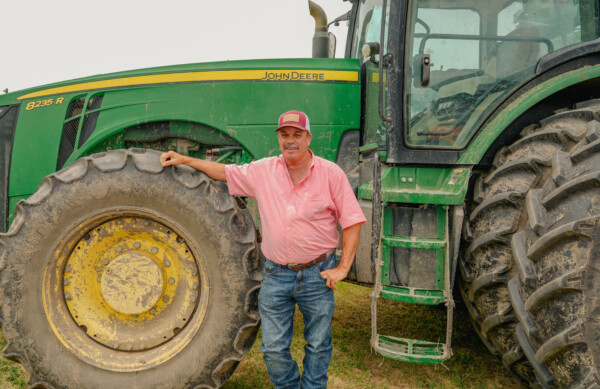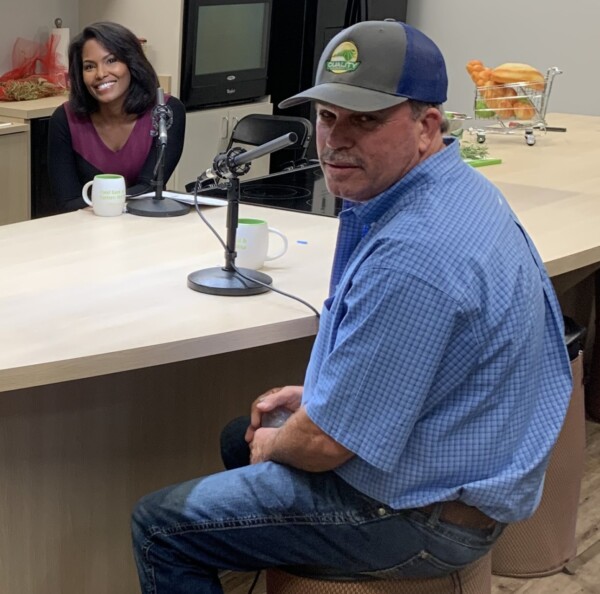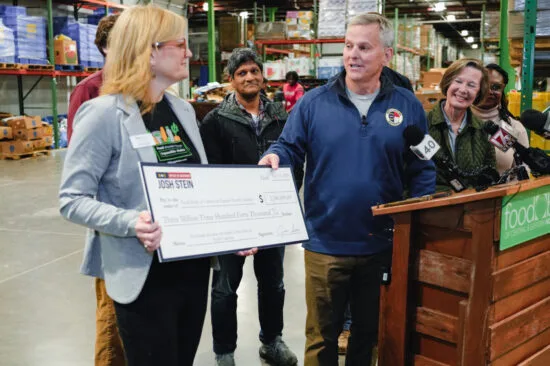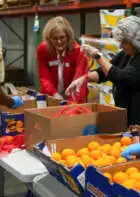Our work wouldn’t be possible without local farmers like Bill Hering, who provide enough fresh produce to fuel millions of meals each year for families facing hunger.
We’re incredibly proud of our partnership with Bill, who grows 100% of his produce for the Food Bank. For close to a decade, Bill has gone above and beyond to provide nutritious, culturally familiar foods like turnips and collard greens. This produce is grown on his family farm at the border of Sampson and Duplin County.
“I’m grateful for the opportunity to be able to work with the Food Bank for several reasons. One, it kept me doing what I enjoyed and the need is there for our food. It’s changed my whole perspective on what we have in that field and how it can be utilized. It ain’t what you get for it. It is the value of that food.”
-Bill Hering, Food Bank grower
When walking Bill’s farm in Faison, NC, your shoes may sink into place. That’s because the produce is grown on sandy clay loam soil — what Bill considers to be “the best soil in North Carolina for draining water while retaining moisture”.
Bill’s commitment to soil management has yielded impressive results. During a recent Food Bank tour, wooden crates were stacked into towers at the entrance of his farm. These crates are for Bill’s sweet potato harvest, which yiels hundreds of thousands of sweet potatoes each year for local families. Every crate is stamped “FBCENC” for the Food Bank, and goes directly to our central distribution centers to be sorted into bags for local food pantries and meal sites.
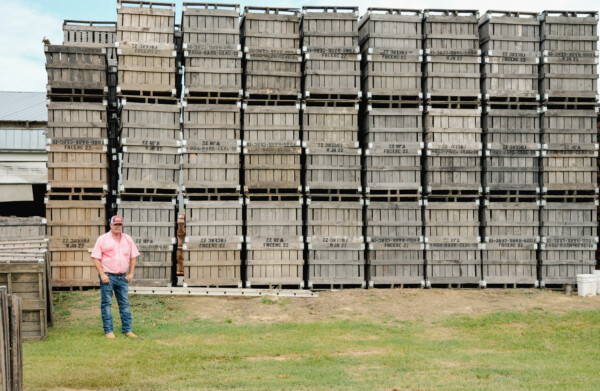
At his 300-acre farm, Food Bank grower Bill Hering shared what farmers are facing and why he grows 100% of his produce for the Food Bank.
We visited Bill’s farm at a time when federal cuts and rising costs are shrinking the resources we need to produce fresh food for our neighbors. Bill has seen all of this unfold as farmers in his community fall behind on loan payments. Our conversation with Bill explored what farmers need right now to sustain their family business and end hunger for good.
This interview was edited for length and clarity. If you want to learn more about the importance of Farmer Bill’s partnership with the Food Bank, listen to Episode Three of our Path to Ending Hunger podcast.
Are you a local farm or business interested in donation or sales opportunities? Learn more about our food industry partnerships.
Join Our Movement to End Hunger For Good
There are a host of ways to make a difference right now in the fight to end hunger. If you’re able, please take a minute to lend your time, your voice, or your financial support as we work to meet rising challenges head on!
